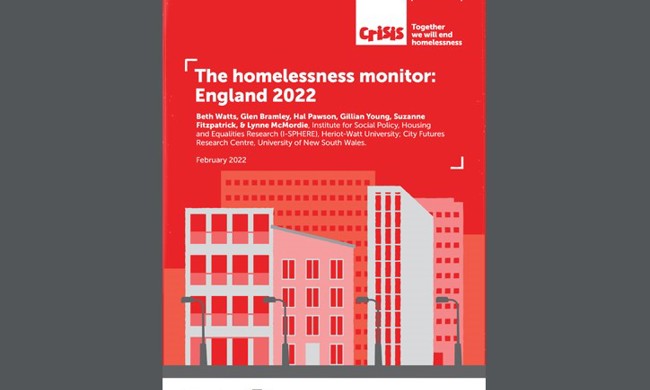The Homelessness Monitor: England 2022
22.02.2022
The Homelessness Monitor: Great Britain 2022 was commissioned by Crisis and led by Heriot-Watt University, as part of the Homelessness Monitor series, a longitudinal study providing independent analysis of the homelessness impacts of recent economic and policy developments in Great Britain. The research takes stock of homelessness in 2022 and the five year period before this. It also highlights emerging trends and forecasts some of the likely future changes, identifying the developments likely to have the most significant impacts on homelessness.
Key findings
-
Levels of ‘core’ (i.e. the most extreme forms of) homelessness are consistently higher in England (0.84% of households in 2020) than in either Wales (0.68% of households in 2020) or Scotland (0.57% of households in 2020). The number of core homeless households are projected to grow further in England, particularly in London, unless policy steps are taken to correct this negative direction of travel.
-
Statistical modelling indicates that the most effective policies for reducing core homelessness include: rehousing quotas for core homeless groups in the social rented sector; increasing the Local Housing Allowance rate; raising the level of Universal Credit payments; expanding Housing First interventions; and maximising the use of prevention tools by local authorities. Such policies in concert could reduce total core homelessness by 34% in England, 30% in Wales, and 42% in Scotland.


